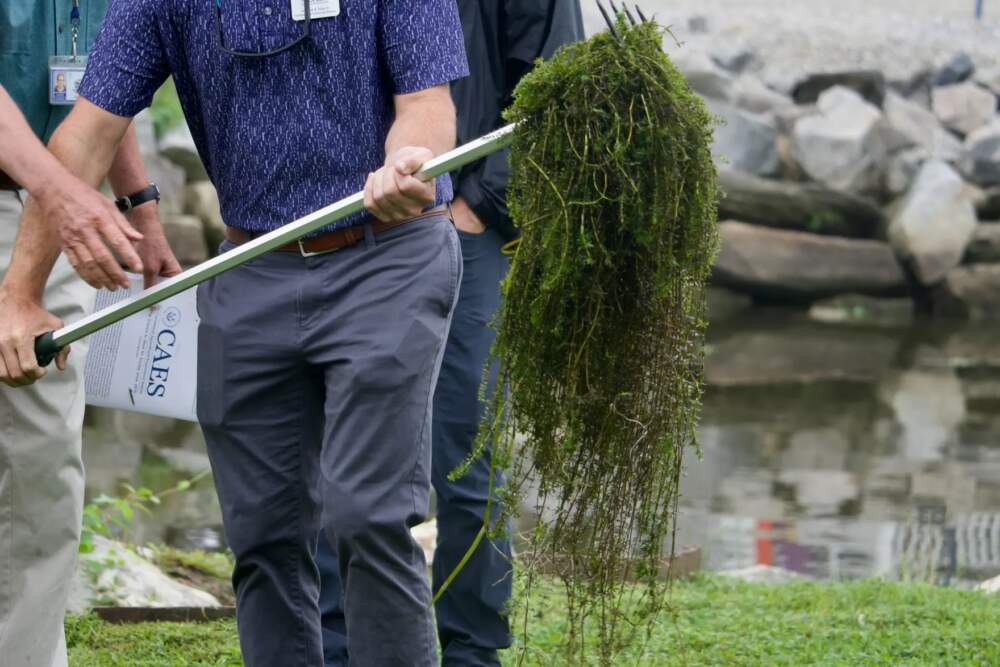Advertisement
Scientists are dyeing the Connecticut River red to help fight an invasive plant

An invasive aquatic plant is taking over the Connecticut River, and scientists are putting red dye in the river to figure out a solution.
Hydrilla, also known as waterthymes, was first found in Connecticut more than 30 years ago, but was not detected in the river until 2016.
Connecticut State Rep. Christine Palm said the plant is a threat to wildlife, drinking water and the people who rely on the river for work and recreation.
“It can thrive in poor conditions,” Palm said. “It causes algae bloom, it grows several inches a day, it sounds almost like a cartoon monster. It even hosts a bacteria that actually can punch holes in the brains of eagles.”
Over the next month, the U.S. Army Corps of Engineers will be dyeing parts of the river red with Rhodamine WT (RWT) to study its water flow. This will help them decide if herbicide can be used to kill the invasive plant.
The four sites are Keeney Cove in Glastonbury, Chapman Pond in East Haddam, Chester Boat Basin in Chester and Selden Cove in Lyme.
Greg Bugbee specializes in aquatic invasive species at the Connecticut Agricultural Experiment Station. He said they need to understand the water flow before they put chemicals in.
“This dye mimics herbicides, if you will, and how long they might last,” Bugbee said. “It's very important before anything is decided that information is put forth as to what would be the consequences of what we do and how it can be done in an environmentally safe manner.”

Bugbee said the dye is safe to use in the water and will dilute fast.
U.S. Sen. Richard Blumenthal said the state received $6 million from the federal government to fight the plant this year — up from $1 million in 2022 — but it needs more.
“It needs to be a $25 million or more program that will provide the resources that are necessary to sustain a longer term program,” Blumenthal said. “Just as this stuff lives under the harshest conditions, we need to provide a sustained and resilient program to fight it.”
This story is a production of the New England News Collaborative. It was originally published by WSHU.